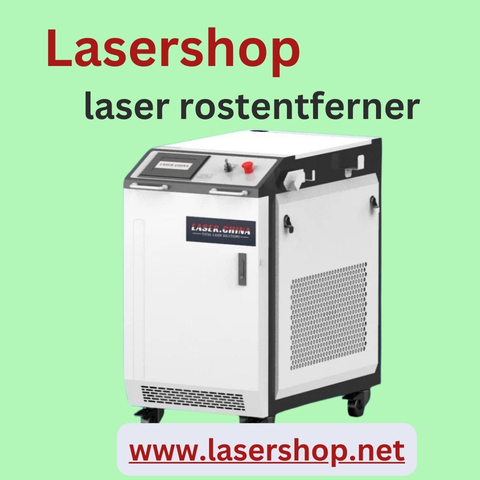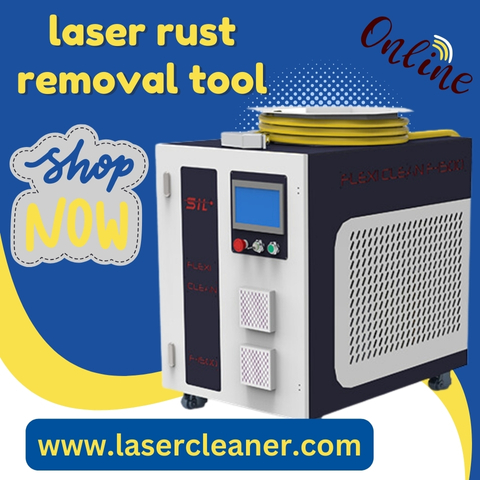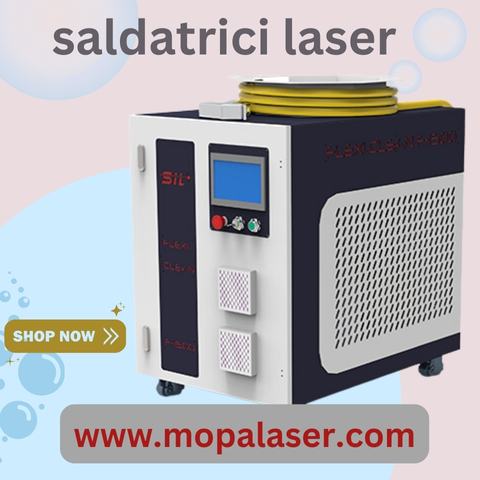Rust has long been a persistent challenge for industries that rely on metal equipment, tools, and infrastructure. Traditional methods such as chemical cleaning or abrasive blasting often come with secondary damage, waste, and safety concerns. The introduction of a laser rust removal tool has transformed how metal surfaces are restored. This modern technology combines precision and efficiency, making it an essential component of industrial cleaning systems.
Understanding the Function of a Laser Rust Removal Tool
A laser rust removal tool uses concentrated laser beams to remove oxidation, contaminants, and coatings from metal surfaces. The principle is simple yet effective: when the laser beam hits the rusted area, it heats the surface layer rapidly. This heat causes the rust and unwanted material to evaporate or detach, leaving the base metal intact. Unlike chemical or mechanical cleaning, the process is controlled, contactless, and environmentally friendly.
The tool operates by directing a focused beam of light energy with a specific wavelength. The rust absorbs the laser energy more effectively than the metal, leading to the selective removal of contaminants. This difference in absorption ensures that the underlying metal remains unharmed, making the laser rust removal tool ideal for delicate or high-value components.
How Laser Rust Removal Works Step-by-Step
The operation involves several stages that together ensure efficient surface cleaning:
- Target Identification – The operator identifies the areas affected by oxidation, scale, or contaminants.
- Laser Calibration – The laser parameters such as power, frequency, and scanning speed are adjusted based on material type and rust depth.
- Beam Application – The laser beam is directed at the surface, where it interacts with the contaminants.
- Surface Reaction – The heat from the laser causes the rust to vaporize or break away from the surface.
- Residue Removal – A vacuum system or air jet clears the particles, leaving a clean, ready-to-use surface.
This process requires no physical contact or abrasive media, significantly reducing wear on the material and extending equipment life.
Industrial Importance of Laser Rust Removal
Industries dealing with metal maintenance, restoration, and manufacturing increasingly rely on laser rust removal systems for surface treatment. Automotive manufacturing, aerospace component maintenance, shipbuilding, and power generation sectors find this technology especially effective.
In the automotive sector, for instance, components often need rust-free surfaces for efficient welding and coating. Similarly, in aerospace, precise surface preparation is crucial for ensuring material performance and reliability. The laser rust removal tool plays a central role in meeting these requirements without the need for chemicals or abrasives.
Furthermore, manufacturing facilities use these systems to clean molds, remove oxide layers after welding, and restore aging metal parts. This method offers a fast, clean, and sustainable way to maintain production efficiency and ensure long-term performance.
The Science Behind Laser Surface Cleaning
The success of a laser rust removal tool lies in the interaction between laser wavelength, pulse duration, and surface material. When the laser hits the rusted surface, the rust absorbs the light energy, leading to rapid heating and vaporization. The metal beneath the rust reflects most of the laser energy, protecting it from damage.
Pulse lasers, particularly fiber and Nd:YAG types, are commonly used for rust removal. Their short, intense bursts of energy create micro-ablation, which lifts off contaminants layer by layer. Continuous-wave lasers can also be used for larger surfaces, offering a uniform cleaning effect.
Control over wavelength and intensity ensures that even complex shapes or small details can be cleaned without affecting precision or tolerance. This makes the laser rust removal tool an advanced option for precision engineering applications.
Operational Safety and Environmental Impact
Using a laser rust removal tool minimizes environmental impact. There are no chemical residues, wastewater, or abrasive dust to manage. The only by-product is a fine, dry dust, which can be easily collected through a filtration or vacuum system.
From a safety standpoint, laser systems come with protective shielding, eyewear, and interlock mechanisms to ensure operator safety. The non-contact nature of the process eliminates risks associated with mechanical abrasion or corrosive chemicals.
In regulated industries such as aerospace and energy, compliance with environmental standards is essential. The laser rust removal tool aligns well with these sustainability requirements, supporting green manufacturing initiatives.
Applications Across Different Materials
Although the name suggests it’s mainly for rust, the laser rust removal tool works effectively on a wide range of materials and contaminants. It can remove oxide layers, paint, oil residues, and even coatings from aluminum, stainless steel, copper, and titanium.
This versatility allows industries to adopt one tool for multiple tasks. For example, in metal fabrication workshops, the same laser system can clean welding seams, prepare surfaces for painting, and restore corroded equipment.
In conservation and restoration, laser cleaning helps in maintaining historical artifacts, sculptures, and monuments where precision and non-destructive cleaning are essential. Museums and restoration experts favor laser systems because they preserve the original surface while eliminating corrosion and dirt.
Productivity and Cost Efficiency
Laser rust removal tools significantly reduce cleaning time compared to traditional methods. Since there’s no need for consumables like sand, chemicals, or solvents, operational costs are lower in the long run. The tool’s durability and minimal maintenance requirements further enhance cost-effectiveness.
Unlike sandblasting, which requires reapplication of coatings after aggressive cleaning, laser cleaning leaves the surface ready for immediate treatment. This streamlined workflow improves productivity in industrial maintenance and manufacturing operations.
Additionally, automation compatibility allows these tools to be integrated into robotic systems or production lines. Automated laser rust removal systems are already being used for continuous operations in automotive assembly and steel manufacturing.
Maintenance and Care of Laser Rust Removal Tools
Proper maintenance ensures long-lasting performance and consistent cleaning quality. Operators should follow a few essential practices:
- Regular Lens Cleaning: Dust or residue buildup can affect beam focus and efficiency.
- Cooling System Monitoring: Maintaining proper temperature control prevents overheating of the laser source.
- Fiber Cable Inspection: Ensuring the fiber optic cable remains undamaged preserves energy transmission quality.
- Software Updates: Modern systems use smart interfaces that require periodic updates for optimized control and safety.
By maintaining these components, a laser rust removal tool can function efficiently for years without significant degradation in performance.
Future of Laser-Based Cleaning Technology
The trend toward cleaner, more efficient manufacturing continues to drive innovation in laser surface treatment. Portable laser rust removal tools are becoming lighter and more user-friendly. Advances in fiber laser technology allow for higher power with lower energy consumption, expanding their use across more industries.
Moreover, integration with AI-powered vision systems enables automated detection of rust or contamination on surfaces, ensuring precise cleaning with minimal human intervention. This move toward smart laser cleaning aligns with the global shift toward sustainable, digitized manufacturing.
Final Thoughts
The laser rust removal tool represents a major shift in industrial surface cleaning practices. It replaces conventional, wasteful, and abrasive methods with precision-focused technology that ensures safety, sustainability, and reliability. As industries seek to extend the lifespan of their assets and comply with environmental regulations, this tool has become an indispensable part of modern metal maintenance.
From small workshops to large-scale manufacturing facilities, its adoption reflects a broader move toward efficiency and responsibility in industrial operations. The combination of precise control, reduced environmental impact, and adaptability makes the laser rust removal tool a forward-looking choice for anyone focused on clean, efficient, and sustainable surface treatment.






